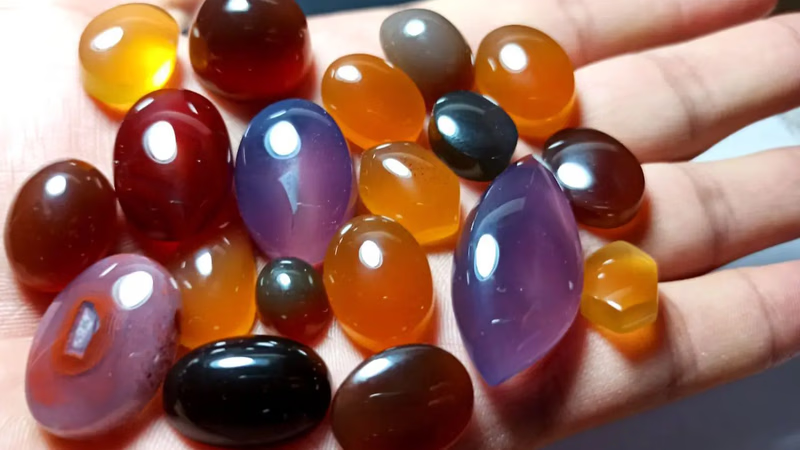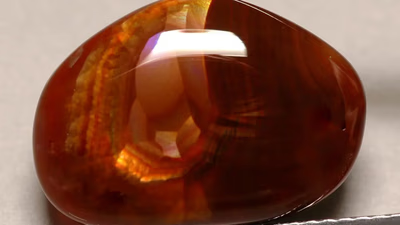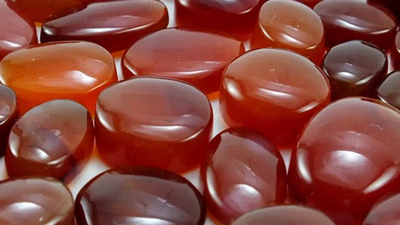
Agate gemstones showcase intricate designs from Middle East artisans.
Agate has been treasured in the Middle East for thousands of years. Ancient civilizations such as the Sumerians, Babylonians, Persians, and Egyptians highly valued agate for its beauty and believed it possessed protective and healing properties. It was commonly used in jewelry, amulets, seals, and decorative objects. Historically, agate deposits were known in various parts of West Asia. Today, countries like Iran, Yemen, Oman, and Saudi Arabia are known for their agate resources. These countries have agate mines and local artisans who work with the stone.
West Asia has a rich tradition of lapidary work, and skilled artisans in the region have been cutting, carving, and polishing agate gemstones for centuries. Local craftsmen create intricate and detailed designs, often incorporating agate into jewelry pieces, such as rings, pendants, and beads. Yemen, in particular, is renowned for its agate gemstone known as Yemeni Aqeeq. This specific type of agate, found in Yemen's mountains, is highly regarded and sought after. Yemeni Aqeeq is often carved into beautiful gemstones for rings, called "Aqeeq rings," which hold cultural and religious significance in the region.
In addition to the commercial trade, agate holds cultural and symbolic significance in the Middle East. It is often associated with traditional beliefs, spirituality, and folklore. Agate gemstones are sometimes used in amulets or talismans, believed to bring protection, luck, and ward off negative energies. Gemstones have different sources and pressure and temperature are two factors that are involved in their formation. In general, the materials and minerals that make up the gemstones are including:
- Magmatic
- Metamorphic
- Sediment
- Organic
So far, about 200 areas including the gemstones have been identified in Iran. Therefore, the development of milling cutters can be job opportunities in the field of exploration, extraction, production, trade, and export. Most of the gemstones identified in Iran are agate, turquoise, crystal, garnet, and jasper. Many of these gemstone mines are located in Khorasan, Isfahan, East Azerbaijan, Hamedan, and Zanjan.
Although the trade in gemstones is one of the most profitable types of trade, unfortunately, there is no accurate and organized scientific study center in the distribution and exploration of gemstones in Iran.
Iran plays a small role in the gemstone trade. The added value of processed stones will be about 700 % of the ore, but the industry of carving and cutting gemstones in Iran is not developed. The value of exports of gold, jewels, gemstones in 2004 (compared to the year 2003) is approximately 1.86 percent.
Exports of gold, jewels, and gemstones in 2004 (compared to the year 2003) is reached to the 5.81 percent and reduced to 5.800 kg.
At present, Iran's main exports are handicrafts, carpets, turquoise, and gemstones. Recently, the Iranian Handicrafts Organization has established training workshops in various places such as East Azerbaijan, Ardabil, Markazi, Tehran, West Azerbaijan, Khorasan, Fars, etc. to improve the gemstone cutting industry.
Of course, centers and schools related to gemstones must equip themselves with the latest tools and technology in the world in terms of cutting and carving gemstones, to be able to keep pace with international standards in this field. Iran is located in the world diamond line, so it should take steps in the development and production of precious and semi-gemstones as much as possible to develop and improve this industry. Iran is dependent on oil export earnings, while precious and semi-gemstones will make the economy more profitable.
Agate is found in abundance in Iran and so far more than fifteen cases of agate minerals that six cases are economically exploited. Agate deposits in Iran have been found in modern Oligocene volcanic rocks up to the present day, all of which have precipitated silicon-rich acidic solutions within the cavities.
Thus, amygdala to geodesic shapes is formed on the surface of the earth, which is composed of layers with different colors of agate. Some of them are filled with layers of agate while others have holes in their center. The presence of layering in these structures indicates the periodicity of sedimentation of agate layers, which can be attributed to the alternating periods of activity of hydrothermal solutions.
Throughout the Middle East, bustling marketplaces called souks have been trading hubs for gemstones, including agate. These traditional markets offer a wide range of gemstone products, attracting local buyers, tourists, and international traders. Today, the agate gemstone trade in West Asia continues, with countries like Iran and Yemen being significant players. Agate jewelry and decorative items are exported to various parts of the world, catering to the demands of both local and international markets.



